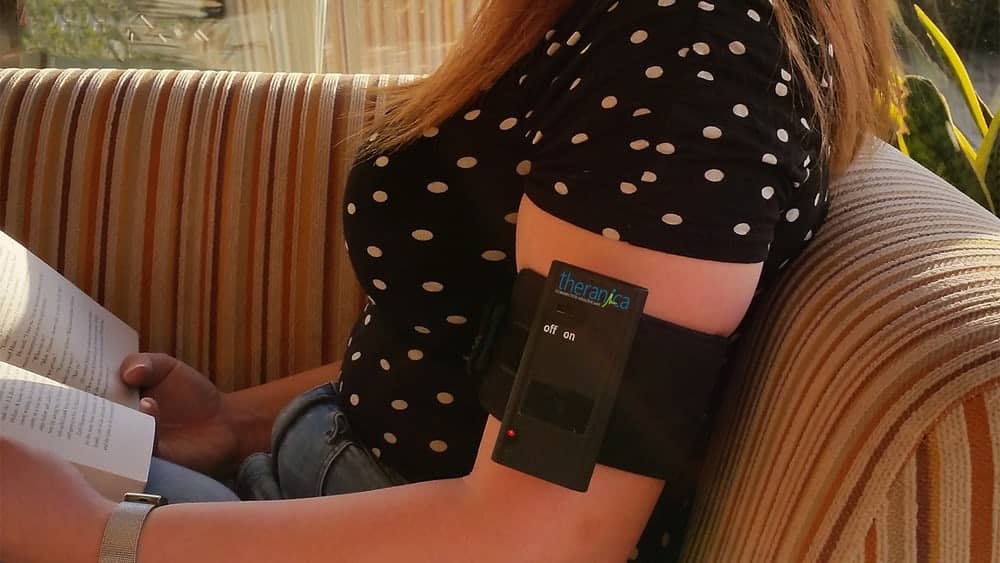If you have ever suffered from migraines, you know what misery they put the victim through. In most cases, your physician would tell you just to wait and let a migraine run its course, which sometimes lasts as long as 72 hours, rendering you incapable of performing even the most mundane tasks.
Triptans are a standard medication used to ease the pain of a migraine headache, but they come with their side effects. As a drug-free alternative, the idea of electrical stimulation for the treatment of a migraine has been around for quite some time. A headband named Cefaly uses neurostimulation for pain relief and is even FDA approved. The latest gadget in the arena is an armband, just like that of a blood pressure measurement cuff called Nerivio. The device is developed byTheranica Ltd, an Israel-based company.
The armband uses two electrodes that come in contact with the skin of the upper arm, a chip to control the electrodes, and a rechargeable battery to power up the band. The company claims that the electrodes deliver pulses to the body which when received by the sensory nerve fibers travel up to the brain stem thus, activating the neurotransmitters which act as natural painkillers. The idea is simple, just like used in other devices but the location of the device is unique, where it can conveniently hide behind a shirt sleeve.
You can control the stimulation wirelessly using a smartphone application. Whenever a headache occurs, you can just pull out your phone and start the stimulation. You can adjust the intensity of the pulses using your phone. The higher the intensity, the better, but be careful because too intense pulses may cause pain.
Dr. David Yarnitsky conducted the study at the Technion-Israel Institute of Technology, and the research was published in a paper in journal Neurology.
The study used 71 test subjects who were victims of frequent migraines, at least eight times each month. Each of the subjects used the Nerivio devices. The devices were programmed to sometimes work at stimulation levels high enough for a real-time treatment while other times they delivered stimulation too weak to be effective. Of all the people who received real treatment, 64 percent reported they had a reduction in pain by at least 50 percent, but this was two hours after the 20-minute treatment ended. Among the people who received sham treatments, only 26 percent reported improvement. In total, the study cured 299 migraines. While the subjects were not made aware that they were being given sham treatments, Yarnitsky admits that weakness of the pulses would at least provide them with the idea.
The results obtained by the use of Nerivio are similar to the ones patients get from triptan medicines, but the side effects are excluded. We do hope that the device makes it to the market soon to provide relief to the migraine victims.
We would appreciate your feedback in the comments’ section below!

